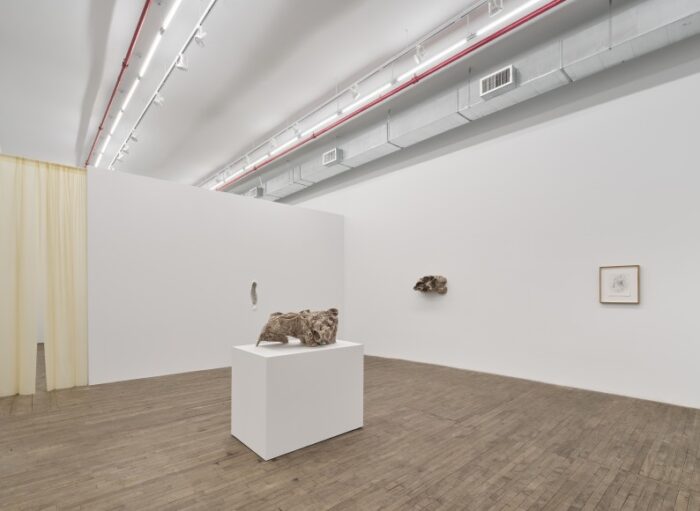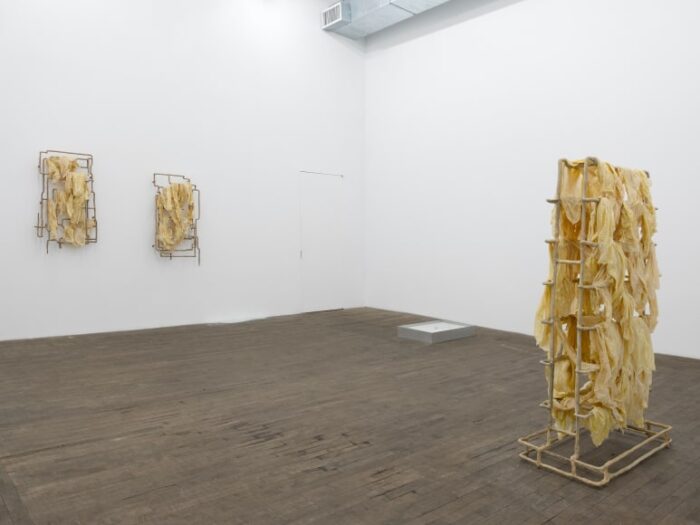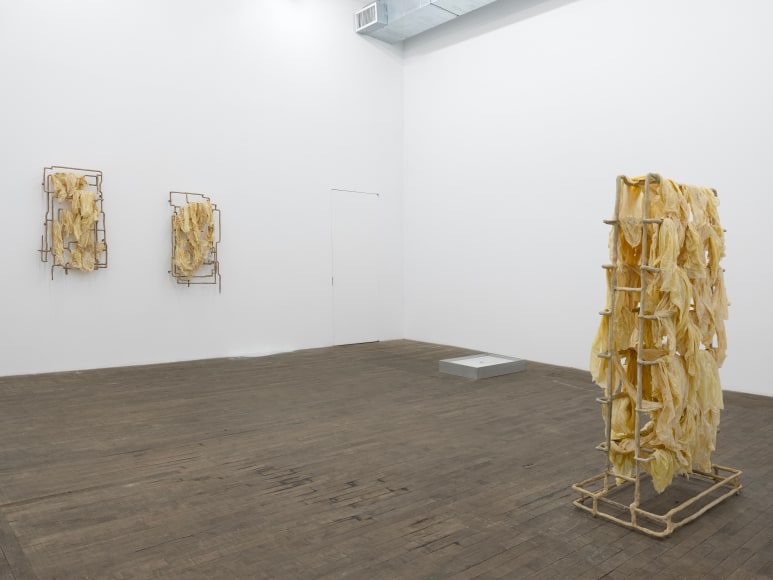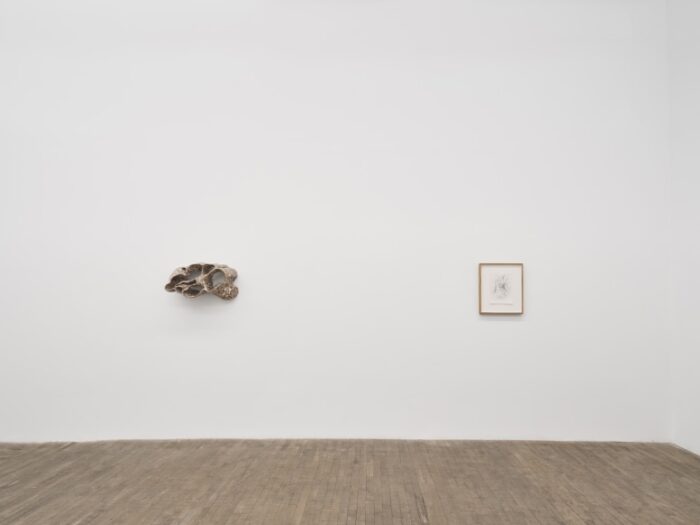
In his latest exhibition, Fan continues his “Sites of Wounding” series, revealing a fascination with the invisible forces that define our physical, emotional, and ecological realms. The show opens with a striking installation: a boiling pool of soy milk doubling as a projection screen for a visceral endoscopy video. Rather than providing a mirror to viewers, the soy milk’s skin-like surface offers an unsettling, internalized glimpse of the artist’s own body. This layered approach exemplifies Fan’s skill in collapsing traditional boundaries between interior and exterior, exposing the raw, often uncomfortable interplays between self and environment. By drawing viewers into this intimate landscape, Fan introduces the idea of personal trauma as a universal, almost ecological phenomenon.
Building on his thematic exploration of wounding, Fan’s new sculptures delve into the regenerative potential of injury. His study of Hong Kong’s Agarwood trees, which emit a fragrant resin as a response to stress, has inspired abstract forms that combine 3D-printed musculature with glass-blown elements. These sculptures are hardened and dense, mirroring the biological reactions of trees and human tissue as they encapsulate trauma. One of the most compelling installations is a freestanding wall punctured to reveal a hidden sculpture within—an invitation for viewers to confront and peer through the physicality of pain as if searching for understanding within its layers. Here, Fan deftly employs the language of biology to comment on the complex ways humans and nature absorb and transform distress.

Installation view, Jes Fan, Sites of Wounding: Interchapter at Andrew Kreps Gallery, New York, 2024. Photo: Olympia Shannon.
In the third chapter of “Sites of Wounding,” Fan juxtaposes his study of human vulnerability with the soybean’s industrialized invincibility. Once vital to traditional farming, soy has evolved into a high-yield crop, unyielding to disease or invasion. Fan uses this symbol of resilience to contrast his earlier themes of wounding. Draped yuba (soy skins) sculptures mimic the texture of human skin, subtly invoking themes of racial identity and cultural commodification. At the same time, an aluminum basin containing suspended soybeans in silicone suggests the liminal state between fragility and durability. Through this material exploration, Fan confronts the impact of resilience as both a survival mechanism and a form of erasure, revealing how biological, agricultural, and social systems can transform wounds into powerful forms of protection and, paradoxically, isolation.
Jes Fan: Sites of Wounding: Interchapter
Andrew Kreps Gallery
55 Walker St. NYC
October 25 – December 20, 2024




